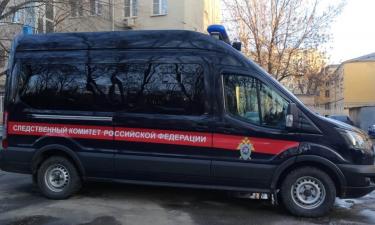What was it like to live in the Soviet Union?
Many people in Russia say these days that they miss the times of the Soviet Union, that life in the USSR was great, all food products were high quality products and so on and so forth.
Interestingly, such remarks can most often be heard from young people, who were not even born in the USSR. Those who were born in the Soviet Union may have a different opinion. Here is a typical "con" opinion:
Life in the USSR was bad. Everyone was living in poverty throughout Soviet history, not only during the period of perestroika. In large cities, a customer in a food store could buy canned cod liver and smoked sausage, and that would be possible on a good day. Food stores in smaller towns and villages were empty. At the same time, radio and television would report record high milk yield and amazing achievements in the poultry industry. Food stores were selling liquid (diluted) sour cream out of huge dirty aluminum cans, as well as bitter herring (wrapped in newspaper), thin bluish whole chickens, brick-like bread and tasteless birch-tree juice.
Some say today that they miss the Soviet ice cream. Ice cream in the USSR was just as good as it is today. However, it did seem amazing against the background of the above-mentioned "food diversity."
Any food store in the Soviet Union was conspicuous for lines of people. People were lining up for hours to buy a piece of low-quality smelly meat like second-class pork ribs. Babushkas in those lines would always smell of mothballs, urine and old rags. Most had worn-out shoes and scary-looking metal teeth. Nowadays, people would pass such a meat counter by quickly trying not to breathe through the nose. Yet, during the Soviet times, there were long lines of people who were desperate to buy a piece.
The decree that was adopted on May 7 in 1985 "About measures to tackle alcohol abuse and alcoholism" created long lines even for worst quality port wine.
In addition to the shortage of goods and meager assortment, Soviet trade could always organize queues from nothing, because the purchasing process was organized very inefficiently, especially in regular small "grocery stores." To be able to buy, for example, 100 grams of cheese, a customer had to stand three lines. The first one was a line for cheese per se, where it would be cut, weighed and wrapped. The second line was the line to the cash desk, in which a customer had to memorize the weight of the cheese and the department, where it was weighed. The third line was the line with a check - to take the weighed and paid for product.
Blue chickens would sometimes be sold outside. Suppliers did not even have to cut their legs and heads so that the chickens would weigh more. Those chickens were also very badly plucked, and one had to singe them above a gas stove before cooking.
Crappy Soviet footwear was terribly hot to wear in summer, cold in winter and wet in spring and autumn. Yet, even such shoes were very hard to buy.
When a person would see a line of people in front of a store, he or she would say: "Who's the last? I'll be after you. What do they sell here?" In other words, people would line up for everything everywhere before they even knew what they could get.
Soviet trade and the whole Soviet system was a perfect illustration of how humiliated, pathetic and miserable people could become when placed within the limits of certain circumstances. Circumstances have changed and people have become different.
Here is a typical "pro" opinion:
For the average person, who lived at that time, the Soviet Union was not about 76 kopecks per dollar, the most powerful army in the world and the all-powerful KGB. People knew that the army and the KGB were protecting the country, but they did not see the military might with their eyes. People could never see dollars, nor could they see the immensity of the industry and economic growth. They could see different things.
The Soviet Union was a country where you could go out at any time of the day without the fear of being attacked by someone who's very unfriendly. In today's Russia, people living on ground floors often mount metal bars on their windows and almost all people have steel entrance doors at their apartments. In Soviet times, there were no such things at all. The doors to apartment buildings would always be open just like the doors to the basements of those buildings. There were never any drug addicts or homeless people in those basements, because there were no such people in the Soviet Union at all: neither drug addicts nor homeless.
In the Soviet Union, women would hang linen and clothes after washing outside - on ropes in the yard, and it never occurred to anyone either to steal or stain them.
In the Soviet Union, people knew their neighbors by their names and would always drop by to each other for some matches or some sugar or salt.
In the Soviet Union, people would always honor war veterans. In the Soviet Union, buying a bus or a tram ticket was always a matter of passenger's conscience. A passenger would have to drop a coin into a special box and then use a wheel on the side of the ticket box to have a ticket. Those boxes were mechanical, they were not automatic, so one could have a ticket without slotting a coin into it first, or have as many tickets as one wanted.
In the Soviet Union, vending machines selling soda were at every corner. People would pay 3 kopecks to get a faceted glass of delicious sweet soda (non-sweet water was 1 kopeck). The glass could be washed before use and no one would ever steal the glasses.
In the Soviet Union, there was the best education in the world for free. In the Soviet Union, children could go to free sports clubs and travel to summer camps, resorts and sanatoriums for free.
In the Soviet Union, there was no terrorism in the Caucasus. The Soviet Caucasus, was a place for resorts, hotels and world's finest mineral water. In Soviet Ukraine, there were no Bandera fighters and no swastikas. In Soviet Ukraine, there were endless fields of golden wheat, aircraft and tank industry, clean cities and friendly, hospitable people. In Soviet Baltic states, there were no SS marches and no kissing up to European officials. The Soviet Baltic states used to be the center for the production of high-precision electronics and radio, automobiles and world-famous balms.
In the Soviet Union, an adult man could come to a lonely child in the street and ask whether he or she needed help, and no one would suspect that man of pedophilia.
In the Soviet Union, young people would be given one-room apartments from the state after marriage. When young people would become parents, they could move to a two-room apartment, and all of that was absolutely for free. No one in the Soviet Union knew the word "mortgage."
In the Soviet Union, there were no piles of corpses or dismembered bodies on television. There was no toilet and below-the-waste humor either. Instead, there were educational programs and good kind-hearted Soviet films that everyone still likes.
In the Soviet Union, a loaf of bread cost 24 kopecks always. It cost 24 kopecks today, four years ago and four years ahead. A ruble forgotten in a book and found ten years later would still be same-value money, not a devaluated piece of paper.
Subscribe to Pravda.Ru Telegram channel, Facebook, RSS!





